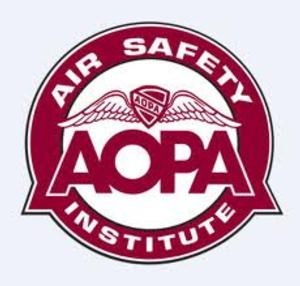Tue, Oct 21, 2014
The AOPA Air Safety Institute Annual Nall Report Gives Us Insight To Analyze The Areas Of Operation That Present The Greatest Risk For Experimental Aircraft
Last week AeroSports Update published a report from EAA regarding experimental-type aircraft accidents. In that report it was pointed out that the accident rate for this year’s reporting period may exceed what the FAA had forecast. In the Air Safety Institute Annual Nall Report we take a look at the areas of operation for experimental aircraft that are analyzed.

The Annual Nall Report is a statistical document that helps look at the past to improve the future. Because of the complexity of the report, the statistics are always about 2-3 years behind the current date of the report. For this reason accident numbers will not match the numbers for this current year as reported by EAA. However the conclusions of the Nall report give us great insight to accident analysis.
In the current Nall report, there were 198 accidents involving experimental amateur built aircraft (E-AB) and experimental light sport aircraft (E-LSA). Most aircraft certified as E-LSA’s are from those aircraft that were converted from 2-place ultralights to an experimental status under the sport pilot rules. This conversion period ran from September 2004 until January 2008.
Unlike accidents in type certificated fixed wing aircraft, mechanical problems were very nearly as common as landing accidents for experimentals. Emergencies during takeoff and climb were also more common in experimentals, accounting for more than 1 out of 8 of all fatal accidents.
The Nall report divides the accidents into 9 classifications of operation. They are:
- Mechanical 25.3%
- Fuel Management 6.1 %
- Weather .5 %
- Takeoff and Climb 12.6 %
- Maneuvering 4%
- Descent/approach 5.1%
- Landing 25.3%
- Other (pilot related) 9.1%
- Other or Unknown 12%
Fifteen of the 24 accidents classified as “other or unknown” involved unexplained engine stoppages; this is a chronic problem area for amateur built aircraft. All told, the combination of known mechanical breakdowns and unexplained power failures caused nearly a third of all accidents in this group of aircraft compared to 19% of those in type-certificated, fixed wing aircraft.
Note that the accident statistics found in the Nall report do not directly relate to the accident statistics released by EAA last week.
Unlike accidents in type-certificated, fixed wing aircraft, mechanical problems were very nearly as common as landing accidents. Emergencies during takeoff and climb were also more common in the E-AB and E-LSA.
More News
Circle To Runway (Runway Number) Used by ATC to inform the pilot that he/she must circle to land because the runway in use is other than the runway aligned with the instrument appr>[...]
Aero Linx: National Aviation Safety Foundation (NASF) The National Aviation Safety Foundation is a support group whose objective is to enhance aviation safety through educational p>[...]
At Altitude Of About 250-300 Ft Agl, The Airplane Experienced A Total Loss Of Engine Power On November 6, 2024, at 1600 central standard time, a De Havilland DHC-1, N420TD, was inv>[...]
From 2009 (YouTube Edition): Three Hour Flight Was 'Flawless' -- At Least, Until Mother Nature Intervened For anyone who loves the aviation business, this was a VERY good day. Afte>[...]
Also: AMA Names Tyler Dobbs, More Falcon 9 Ops, Firefly Launch Unsuccessful, Autonomous F-16s The Air Force has begun ground testing a future uncrewed jet design in a milestone tow>[...]
 ANN's Daily Aero-Term (05.05.25): Circle To Runway (Runway Number)
ANN's Daily Aero-Term (05.05.25): Circle To Runway (Runway Number) ANN's Daily Aero-Linx (05.05.25)
ANN's Daily Aero-Linx (05.05.25) NTSB Prelim: De Havilland DHC-1
NTSB Prelim: De Havilland DHC-1 Classic Aero-TV: The Boeing Dreamliner -- Historic First Flight Coverage
Classic Aero-TV: The Boeing Dreamliner -- Historic First Flight Coverage Airborne-NextGen 05.06.25: AF Uncrewed Fighters, Drones v Planes, Joby Crew Test
Airborne-NextGen 05.06.25: AF Uncrewed Fighters, Drones v Planes, Joby Crew Test



